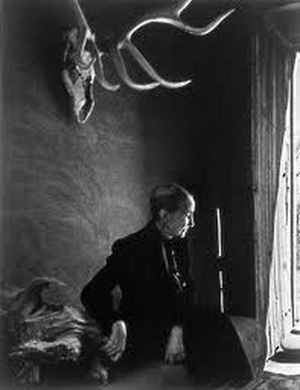Well-behaved Women Didn’t Make New Mexico’s History
(Photo courtesy Georgia O'Keefe Museum)
Coronado led the expedition to what would eventually become the state of New Mexico seeking a king’s ransom in gold. But what he found instead was a wide, burning landscape of stark contradictions and unique natural beauty; a land of painted desert, rolling hills, jagged mountains and endless blue skies ornamented with picture-perfect cloud formations.
The Pueblo people, unaware they were reputed to be wealthy beyond imagination, lived in houses made of mud bricks baked in the hot sun. Flakes of Mica and bits of straw embedded in the surface glinted in the hot sunlight.
In time, important trade routes were established and in the centuries that followed the cultures, beliefs and traditions of the native people, the conquering Spanish and Anglos who followed rutted paths and broken roads, blended.
The result is a place like no other.
I was just in New Mexico, spending most of my time along the road between Santa Fe and Taos. And I discovered, wrapped in all the history of the region, the natural beauty and the contemporary focus on wine, food and art, the unexpected legacy of more than a few determined women. New Mexico may have been shaped by the men who laid claim to it, but it was made even richer by a flood of stubborn, demanding and eccentric women who took one look at the mountains in the distance, the pinyon trees and the wide open spaces, and never left.
The list is curious and impressive: Movie star Greer Garson--the implacable Mrs. Miniver-- married into a ranch outside Santa Fe in the late 1940s and by the time of her death, in her 90s, she’d funded and endowed what would become Pecos National Park.
New York socialite Millicent Rogers swept into Taos in 1949 and, consumed by a passion to conserve - while immersing herself in it - the culture of the Southwestern Indian, amassed an enormous collection of native turquoise and silver jewelry, pottery, textiles and paintings that would eventually, after her death in 1953, become the Millicent Rogers Museum of Taos.
Earlier, Mabel Dodge Luhan purchased land and a rambling adobe house and set out of to create a desert salon, a writers colony. Her tempestuous personal life became the stuff of literary legend, but her house still stands as a retreat center and bed and breakfast.
Georgia O’Keefe’s life and art changed forever when she planted herself--already in midlife--in the dry soil. Her home sits high on a hill in the Village of Abiquiui and looks out on a wide view she captured on canvas again and again.
Willa Cather, Frieda Lawrence, Edna St. Vincent Millay were all drawn to New Mexico, and so many other women--some rich, some rich only in talent and vision--came and stayed to sculpt a new life in a wild place. They played by new rules or their own rules. and they all possessed a restless energy that matched the place they’d settled.
In the dazzling New Mexico light, fed by the raw elements of sun, sky, earth and water, women blossomed like the cacti and golden Chamisa that blooms across the desert. They proved that sometimes - to paraphrase Virginia Woolfe - all a woman needs is money and a territory of her own.
Cheryl-Anne Millsap writes for The Spokesman-Review and is the editor of Spokane Metro Magazine. Her essays can be heard on Spokane Public Radio and on public radio stations across the country. She is the author of “Home Planet: A Life in Four Seasons” and can be reached at catmillsap@gmail.com
